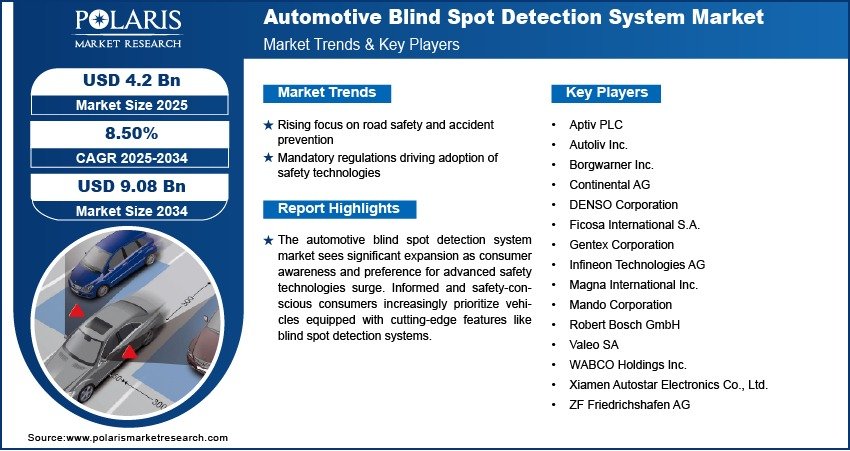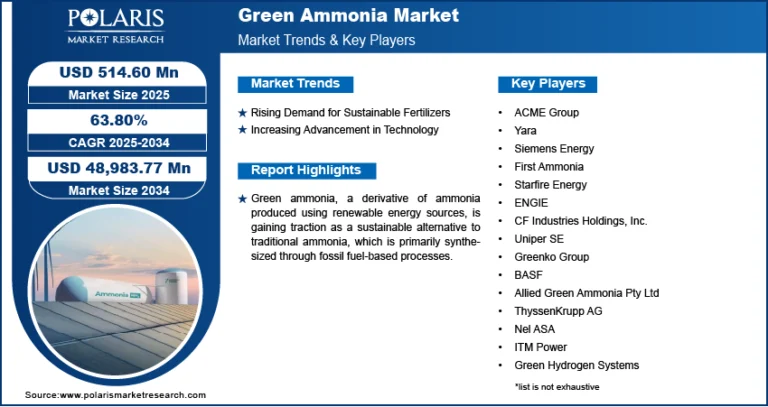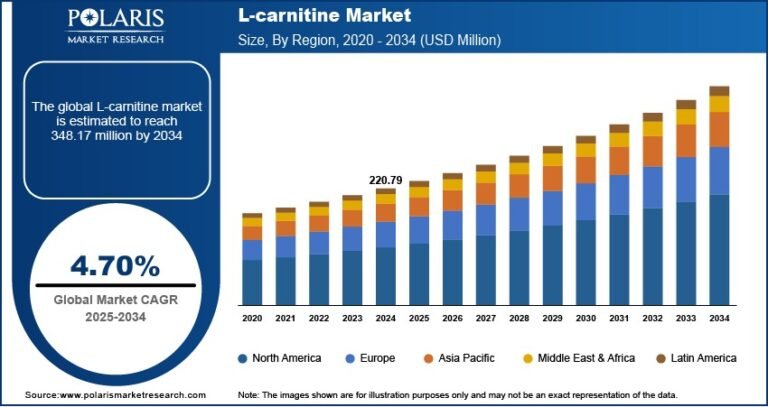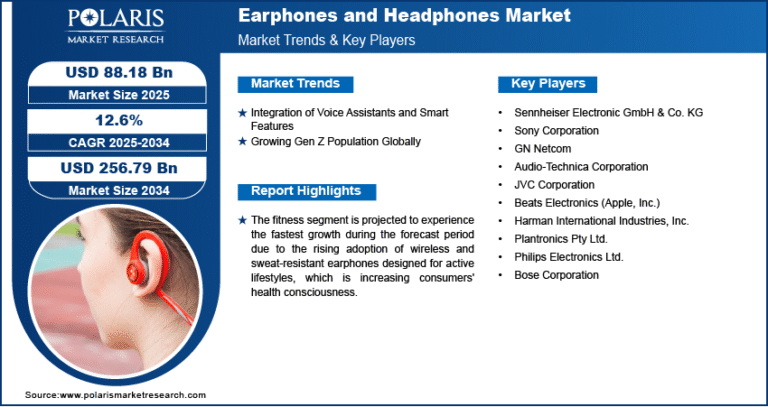Automotive Blind Spot Detection System Market Size Projected to Reach USD 9.08 Billion by 2034 | CAGR of 8.5%

The global Automotive Blind Spot Detection Market was valued at USD 3.84 billion in 2024 and is projected to grow at a CAGR of 8.5% from 2025 to 2034. This growth is primarily driven by the rising emphasis on vehicle safety technologies and the broader adoption of Advanced Driver Assistance Systems (ADAS). Blind spot detection systems play a vital role in enhancing driving safety by alerting drivers to vehicles and objects that are not visible in their side mirrors, thereby reducing the risk of collisions.
As automakers worldwide continue to prioritize safety features to comply with stringent regulatory standards and meet rising consumer expectations, the integration of blind spot detection systems is gaining traction across both passenger and commercial vehicle segments. Moreover, the increasing awareness among consumers about vehicle safety and the rising disposable income in developing economies further support the demand for advanced automotive safety systems.
Key Market Trends:
-
Increased ADAS Integration: Automotive OEMs are increasingly integrating blind spot detection as part of comprehensive ADAS packages, especially in mid-range and high-end vehicles, offering enhanced driving assistance and safety.
-
Growing Demand for Electrification: As the electric vehicle (EV) market expands globally, OEMs are focusing on incorporating advanced safety features, including blind spot monitoring, into EV models to improve safety and appeal.
-
Technology Advancements: Improvements in sensor technologies, such as radar and ultrasonic systems, are making blind spot detection systems more accurate and reliable, encouraging wider adoption.
-
Shift Toward Semi-Autonomous Vehicles: As the automotive industry moves toward semi-autonomous and autonomous driving, blind spot detection remains a crucial component in ensuring situational awareness and driver support.
-
Rising Consumer Awareness: Increased road safety awareness and rising accident rates are pushing consumers to invest in vehicles equipped with enhanced safety features like blind spot monitoring.
Market Size & Forecast:
|
Market size value in 2025 |
USD 4.2 billion |
|
Revenue forecast in 2034 |
USD 9.08 billion |
|
CAGR |
8.50% from 2025 – 2034 |
Request for Free Sample:
Key Market Opportunities:
The growing regulatory push for mandatory safety technologies across regions such as North America and Europe presents a strong opportunity for market players. Furthermore, the penetration of blind spot detection systems into entry-level and mid-segment vehicles is expanding the addressable market base. Additionally, rising urbanization and increasing vehicle ownership in Asia-Pacific and Latin America are creating new growth avenues. Integration of blind spot detection with other smart systems like lane-keeping assist and rear cross-traffic alert further enhances market prospects.
Market Scope:
The Automotive Blind Spot Detection Market covers a wide range of vehicle types including passenger cars, light commercial vehicles, and heavy commercial vehicles. The market is segmented based on component (sensors, cameras, radars), technology (ultrasonic, radar-based), and end-user (OEMs and aftermarket). Regionally, North America and Europe lead the market due to strict safety norms and high adoption of advanced technologies, while Asia-Pacific is poised to witness significant growth fueled by increasing automotive production and a rise in consumer safety awareness.
In conclusion, the global automotive blind spot detection market is evolving rapidly, supported by a strong regulatory landscape, continuous technological innovations, and the growing consumer focus on road safety. With increasing investment in intelligent vehicle technologies, the market is expected to experience robust growth over the forecast period.





